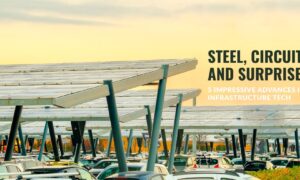In this day and age, several world-changing technologies continue to grow at an increased pace compared to the advancements we saw in past decades. We are all familiar with machine learning, IoT, and artificial intelligence.
While all these technologies are likely to overthrow and replace most other systems, RPA or Robotic Process Automation remains one of the major technologies strengthening its grasp over businesses looking to transform themselves in the coming years.
However, there still are many misconceptions about what exactly RPA is and its range of capabilities. People sometimes confuse it with artificial intelligence. In this post, we will look at how far this technology has grown and the different ways we can use it.
RPA’s Functionality & Uses
So what is Robotic Process Automation? It‘s a manually coded virtual bot that helps automate various business processes that are generally deemed repetitive and a waste of valuable resources such as time and money.
The robot part is mostly represented by a virtual character that works based on an algorithm designed to perform tasks in smarter and faster ways than a human ever could. This technology was only affordable by large companies a few years ago however with new business models coming up, companies of all sizes can take advantage of RPA.
For instance, let’s take the example of a finance employee performing a complex invoicing task. The process would be to generate an invoice from set of billable items in an input file. This would require creation of the invoice by taking the invoiceable items, cross checking the pricing and any billing agreements, discounts, creating the invoice in the right format, updating the invoice tracker, emailing the customer and updating the finance system
In such a scenario, a technology like RPA can save a great deal of time and resources by being able to automate the end to end process exactly replicating the steps that the human employee would perform and thereby freeing the employee to perform tasks that require human judgement.
The Role Of AI & Machine Learning in RPA Systems
Today, the latest versions of RPA systems are powered by much more advanced technologies such as artificial intelligence and machine learning. These integrated technologies enable machines to monitor and automatically learn from repetitive human actions effectively.
These integrations can provide an enhanced virtual RPA system with extra features such as suggestive capabilities that could drastically improve business processes. They can develop intelligence that will let them calculate and execute smarter solutions that you can describe as impossible for human beings to carry out.
Again, updating the earlier invoicing example with this advancement would eliminate the requirement for human inputs where the system can learn from activities where a rule can be applied, making it a completely autonomous automation solution. Think of it as a layer of intelligent software with pre-set rules and responses which eventually learns and improves its workings with time and experience.
Such systems are widely used in email marketing and service provider companies. You must be familiar with email automation or messaging systems integrated with functions that provide you with services and suggestions based on your preferences and previous activities on the respective platform.
Conclusion
Research indicates that the total market spend on robotic process automation will touch almost USD13 billion by 2030, where its peak will be sometime around 2027. It also suggests that most of those adopters will belong to the manufacturing sector.
The current pandemic scenarios and their repercussions kind of solidifies this rising trend in automation due to drastic requirements of reducing human contact as much as possible considering safety concerns.
Alternative technologies such as AI and machine learning will also see significant developments in creating intelligent systems that minimise human intervention and errors. In recent decades, we have witnessed incredible transformations that have changed everything we knew and considered normal. The rapidness of these changes demonstrates how committed companies are to furthering our future for the better with the help of newer and brownfield technologies like RPA.

































